Petunia is a bright and very attractive annual plant that is considered an ideal decoration for the home and garden. The main features of a flowering crop are high decorative qualities, long and abundant flowering, and a variety of species and varieties.
Every flower lover will be able to find a specimen to suit his taste among the huge family of petunias.You can choose plants with large and small inflorescences, for growing in a flowerbed or in a flowerpot, low-growing or with long shoots hanging down in a cascade. There is only a significant disadvantage in growing such a universal flower - it is expensive seed material with low germination, special conditions for obtaining high-quality seedlings and a long seedling period.
Alternatively, you can get a new specimen much faster by propagating from cuttings. This article will talk about this in more detail.
Why do cuttings take place?
This method of reproduction has a number of advantages:
- from each plant you like, you can get more than a dozen seedlings in a relatively short period of time;
- in each seedling unit all the varietal qualities of the selected specimen are preserved; when purchasing seeds of a variety you like, no one will give such a guarantee;
- planting material does not require any financial investments and significantly saves the budget;
- in contrast to the long process of growing seedlings, you can save on your free time, without wasting it on preparing and sowing seeds, watering and fertilizing, picking and disease control, special care for seedlings and constant attention.
Spring and autumn cuttings differ in some features, but the procedure remains clear and accessible even to a beginner in floriculture. Having mastered this propagation method, you can quickly get results in the form of many new plants. Their quantity will be significantly higher than with the seedling method, and much less time will be spent.
With the help of cuttings, experienced flower growers transform their plots in a short period of time, plant spectacular plants in flowerpots and pots on the veranda and balcony, decorate flower beds and flower beds, and also delight their family and friends with pleasant gifts. Some grow petunias using cuttings for commercial purposes and receive a worthy addition to the family budget, since the annual crop is always in great demand and popularity.
Features of cuttings in the spring season
In the first days of March, when daylight gradually increases, a favorable time comes for the propagation of petunias and the rooting of cuttings. Until this point, the mother plants are kept in a cool, dry room, such as a cellar. Caring for them involves minimally moistening the soil in the flower pot (about four times a month).
In the fall, before the onset of the first sub-zero temperatures, the green mass of petunias is trimmed by about fifty percent using pruning shears. When all the remaining leaves have fallen, and this happens within two to three days, containers with bare stems are placed in storage until March. You can keep the crops in a cool residential room, but you will have to moisten the soil more often so that the root part does not dry out.
Features of the procedure:
- rooting of cuttings is carried out in a warm, enclosed room, without drafts; a certain amount of peat tablets and special lighting devices for additional lighting are pre-prepared;
- cuttings are cut with disinfected tools (sharp knife or pruning shears) so that the top cut is straight and the bottom at an angle, the average length is from five to seven centimeters;
- peat tablets are pre-soaked in a biostimulant solution, the moisture content of which should be at an average level when planting cuttings;
- Use a wooden stick to make a small indentation in each tablet;
- cuttings are buried approximately five millimeters;
- tablets with seedlings are placed in transparent plastic containers, covered with a lid or film;
- As the buds of new leaves appear, it is recommended to remove the cover for several hours for ventilation, and later - for good.
Caring for cuttings involves moderate watering, without excess water. Active flowering of petunias from cuttings begins in the first half of May, that is, approximately two months after cuttings.
Rules for cuttings in autumn
In the absence of suitable storage places for mother plants, the propagation process is carried out in the fall - from the beginning of September to the end of October. Seven to ten days before cuttings, flower crops are watered with herbal infusions or a urea-based solution and kept in greenhouse conditions. Such watering promotes the formation of new shoots.
Features of the autumn procedure:
- the tops of the stems are shortened by about nine to ten centimeters, and cuttings about seven centimeters long are cut from the remaining stems;
- Seedlings are buried in prepared peat tablets and placed in a mini-greenhouse.
Autumn cuttings need high-quality lighting for twelve hours a day. If optimal conditions are created, already in the second half of January, petunias will grow a sufficient amount of green mass, and in early February they will delight with abundant flowering. Plants obtained in this way can be cut again.
How to grow petunia: secrets and tips
The process of growing bright and attractive flowers will not be so difficult if you take into account some nuances.
Don't forget to read:
Petunia is a heat-loving flower and cannot survive minimal night frosts. That is why you should not rush to move young plants into the open air. One cold night can destroy tender seedlings. It is prudent to move crops into the garden only after real warm weather has established.
Long flowering throughout the summer season requires a lot of strength from the plants and a large supply of nutrients. The basis of the substrate for petunias should be high quality compost.
Before planting seedlings, each container with holes for water drainage (at the bottom) is filled with drainage material (for example, expanded clay).
The secret of the voluminous flowering crown of petunia lies in the correctly selected container. Its optimal volume for one plant should be five liters.
Another secret to the full growth of flowers is regular watering and fertilizing. Organic and mineral fertilizers should be alternated.
The flowering period is significantly extended, and the high decorative effect is maintained if faded buds are removed constantly and in a timely manner. In such cases, crops can bloom magnificently and abundantly before the arrival of autumn cold weather.
Cuttings are the most convenient and reliable way to propagate petunias. Such plants are hardier, they are less susceptible to diseases and grow faster.
Article from the section “And I do this...”
The opinions of the authors of articles in this section do not always coincide with the opinions of the site administration
Watch a video about the rules for cutting ampelous petunia:
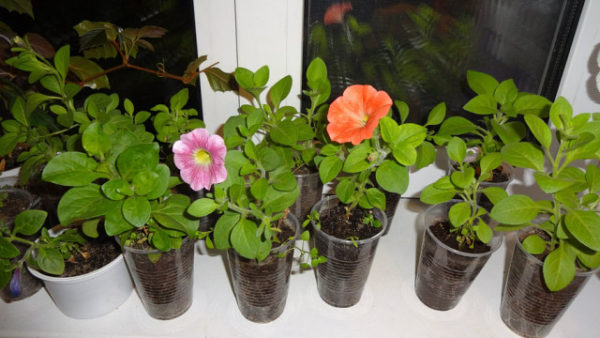
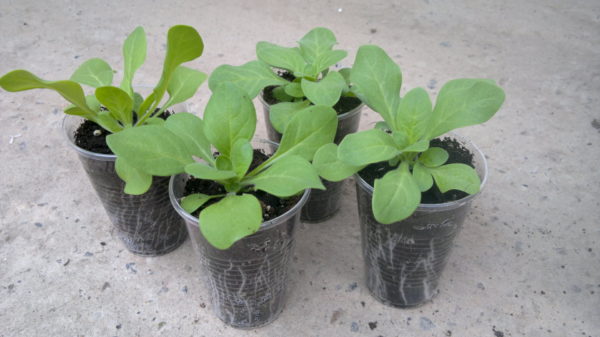
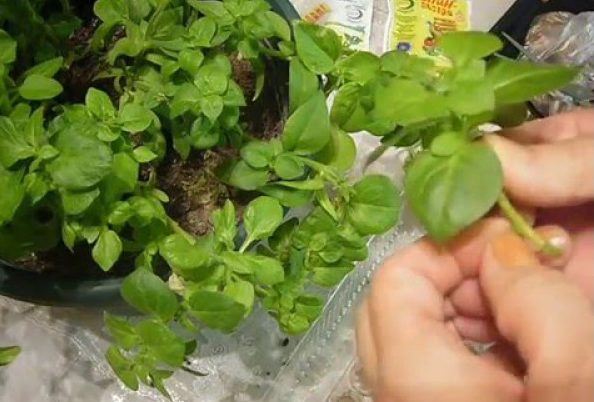
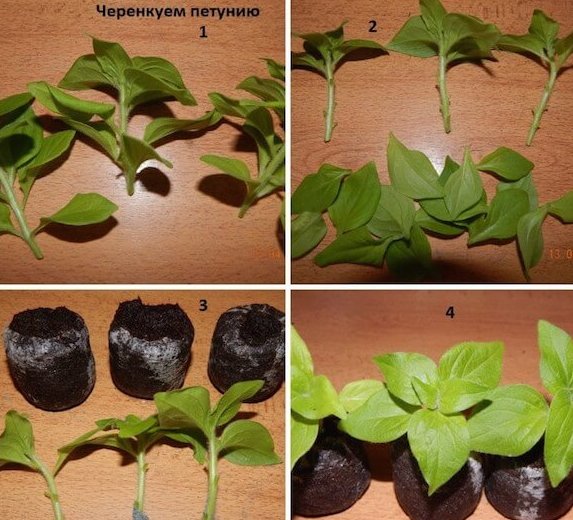
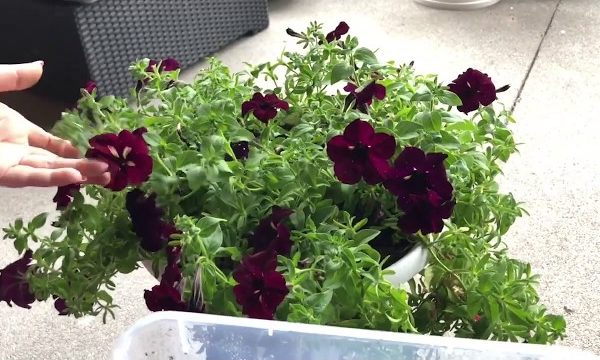
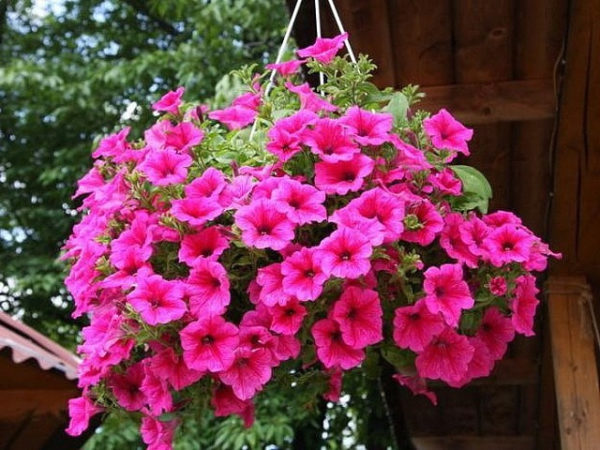

 (4 ratings, average: 4,75 out of 5)
(4 ratings, average: 4,75 out of 5) CUCUMBERS NEVER GET SICK, I'VE BEEN USING ONLY THIS FOR 40 YEARS! I SHARE A SECRET WITH YOU, CUCUMBERS ARE LIKE THE PICTURE!
CUCUMBERS NEVER GET SICK, I'VE BEEN USING ONLY THIS FOR 40 YEARS! I SHARE A SECRET WITH YOU, CUCUMBERS ARE LIKE THE PICTURE! You can dig a bucket of potatoes from each bush. Do you think these are fairy tales? Watch the video
You can dig a bucket of potatoes from each bush. Do you think these are fairy tales? Watch the video
 How our fellow gardeners work in Korea. There is a lot to learn and just fun to watch.
How our fellow gardeners work in Korea. There is a lot to learn and just fun to watch. Eye trainer. The author claims that with daily viewing, vision is restored. They don't charge money for views.
Eye trainer. The author claims that with daily viewing, vision is restored. They don't charge money for views. A 3-ingredient cake recipe in 30 minutes is better than Napoleon. Simple and very tasty.
A 3-ingredient cake recipe in 30 minutes is better than Napoleon. Simple and very tasty. Therapeutic exercises for cervical osteochondrosis. A complete set of exercises.
Therapeutic exercises for cervical osteochondrosis. A complete set of exercises. Which indoor plants match your zodiac sign?
Which indoor plants match your zodiac sign? What about them? Excursion to German dachas.
What about them? Excursion to German dachas.